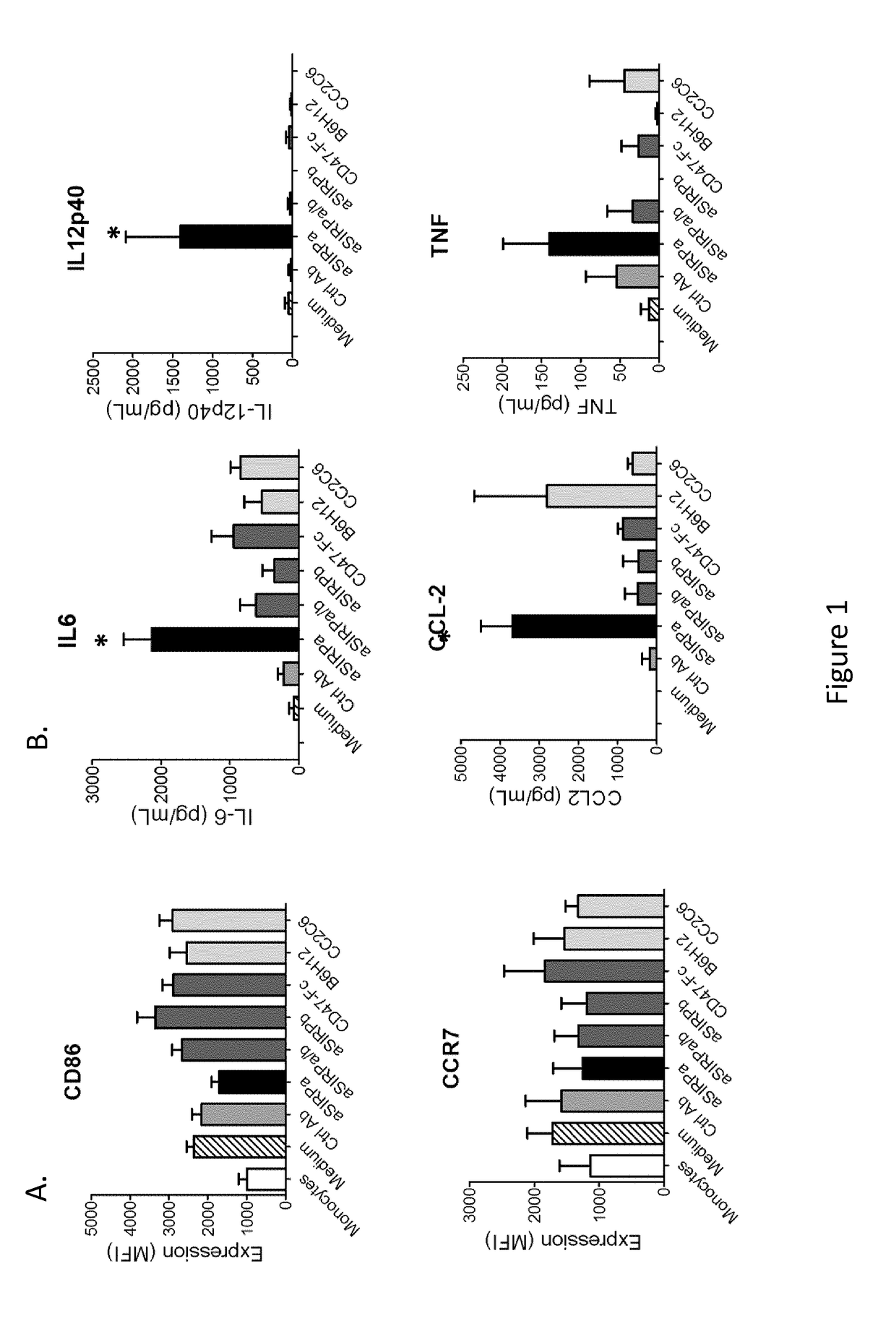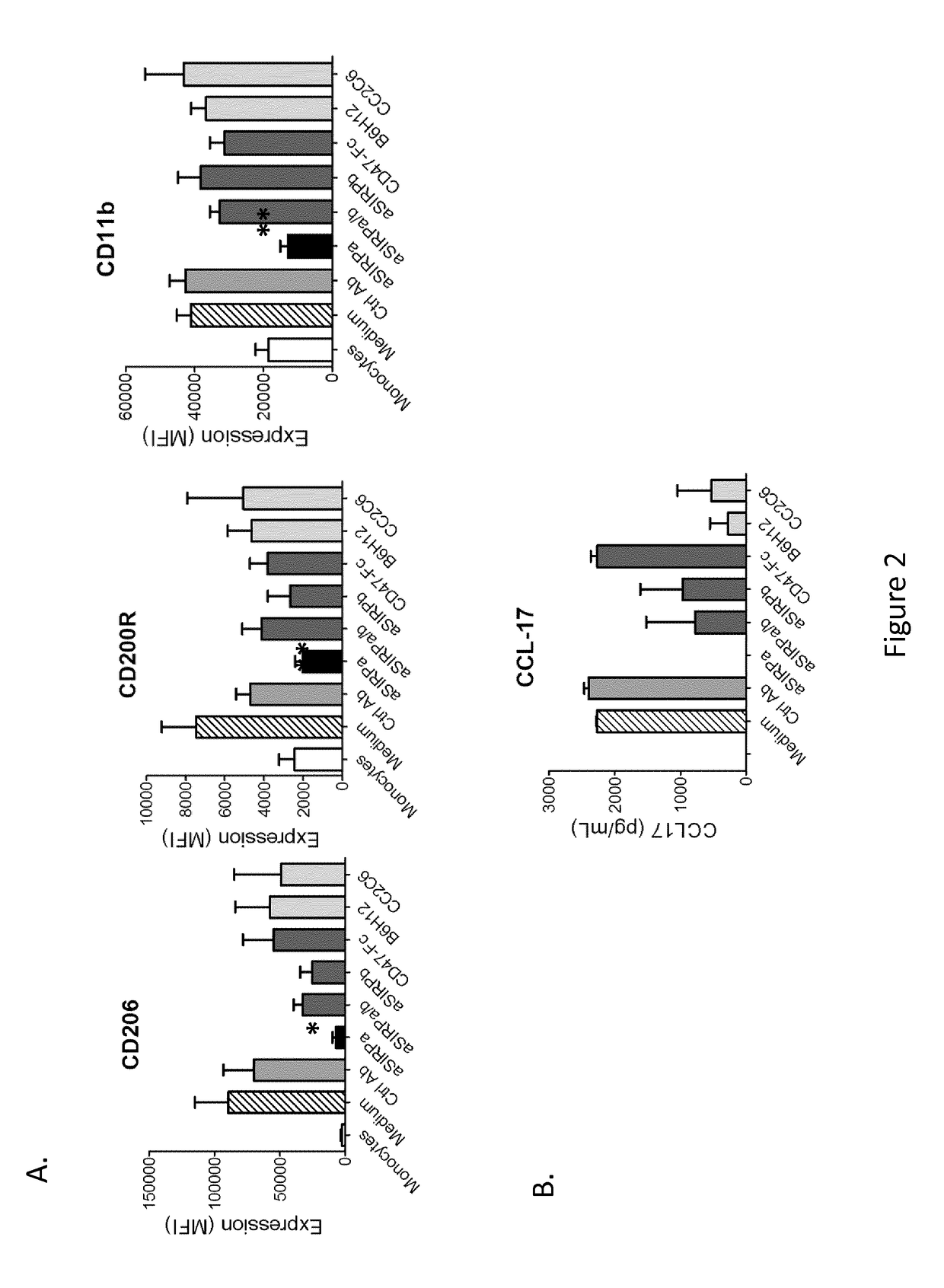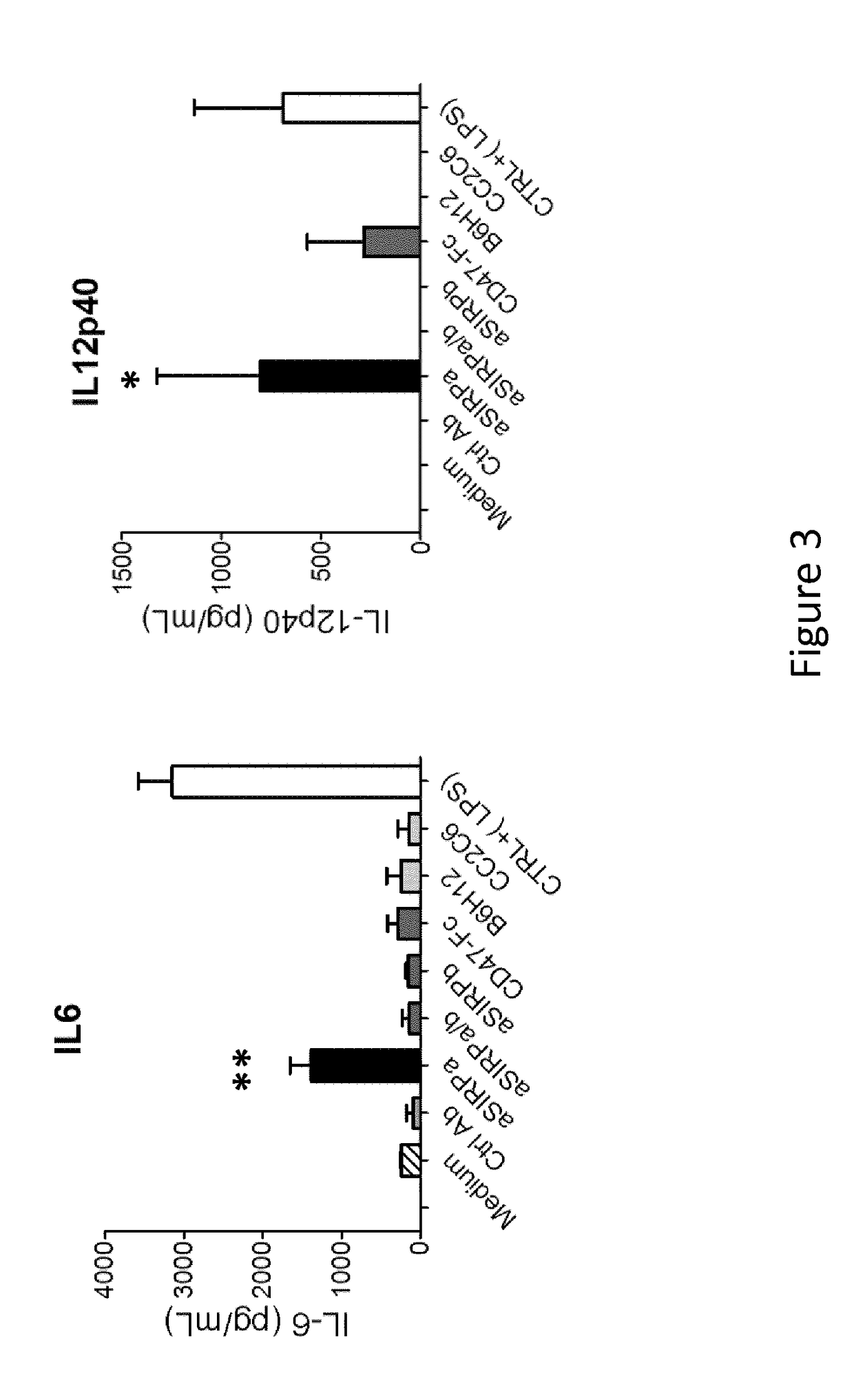Methods and compositions for modifying macrophage polarization into pro-inflammatory cells to treat cancer
a macrophage and pro-inflammatory cell technology, applied in the field of immunotherapy, can solve the problems of cytotoxic effect of drugs, not treating all cancers, and none of them has yet resulted in healing, so as to favor pro-inflammatory m1-type macrophages, and inhibit the polarization of m2-type macrophages
- Summary
- Abstract
- Description
- Claims
- Application Information
AI Technical Summary
Benefits of technology
Problems solved by technology
Method used
Image
Examples
example 1
Study of the Macrophage Polarization (M1 and M2) and Blocking SIRPa Pathway
[0160]1.1. Selective Blockade of Sirp Alpha Prevents Human Macrophage Polarization in Type 2 (M2) but not in Type 1 (M1)
[0161]FIG. 1A shows that antibodies directed against SIRP molecules or CD47 do not prevent M1 macrophage polarization induced by GM-CSF+M-CSF because the expressions of the M1 cell surface markers (CD86 and CCR7) are not modified compared to control conditions. In contrast, the over-expression of CD206, CD200R, CD11b and PD-L1 (hallmarks of M2 macrophage phenotype) was significantly inhibited with selective anti-SIRP alpha mAb (FIG. 2A and FIG. 11) but not with control antibodies (anti-SIRPa / b or Sirpb), CD47-Fc recombinant protein or anti-CD47 mAbs (clones B6H12 and CC2C6). In particular, FIG. 11 shows that blockade of SIRPa by a monoclonal antibody prevents the acquisition of the M2 macrophage phenotype induced by IL-4, indeed the expression of M2 markers (CD206, CD11b, and PD-L1) did not ...
example 2
tudy of the Effects of SIRPa Blockade
[0172]2.1. Effect of the SIRPa Blockade in an In Vivo Model of Hepatocarcinoma
[0173]FIG. 8 represents the overall survival rate of animals inoculated with hepatocarcinoma and treated with an anti-CD137, an anti-SIRPa or both during 4 weeks. 20% of the animals treated with anti-Sirpa monotherapy survived more than 25 days and 25% of animals treated with anti-CD137 monotherapy survived more than 30 days. However, 100% of the animals receiving the combo anti-Sirp+anti-CD137 were still alive after 80 days, compared to the other conditions, showing a synergistic effect of the 2 molecules.
[0174]FIG. 9 represents the overall survival rate of animals inoculated with hepatocarcinoma and treated with an anti-PD-L1, an anti-SIRPa or both during 4 weeks. The results showed a very interesting surviving rate when animals were treated with both molecules, compared to each molecule alone (20% of alived animals after 20 days with anti-sirpa compare to 12% of aliv...
PUM
| Property | Measurement | Unit |
|---|---|---|
| Therapeutic | aaaaa | aaaaa |
Abstract
Description
Claims
Application Information
 Login to View More
Login to View More - R&D
- Intellectual Property
- Life Sciences
- Materials
- Tech Scout
- Unparalleled Data Quality
- Higher Quality Content
- 60% Fewer Hallucinations
Browse by: Latest US Patents, China's latest patents, Technical Efficacy Thesaurus, Application Domain, Technology Topic, Popular Technical Reports.
© 2025 PatSnap. All rights reserved.Legal|Privacy policy|Modern Slavery Act Transparency Statement|Sitemap|About US| Contact US: help@patsnap.com



